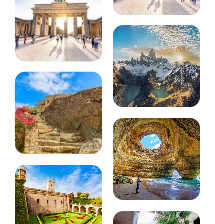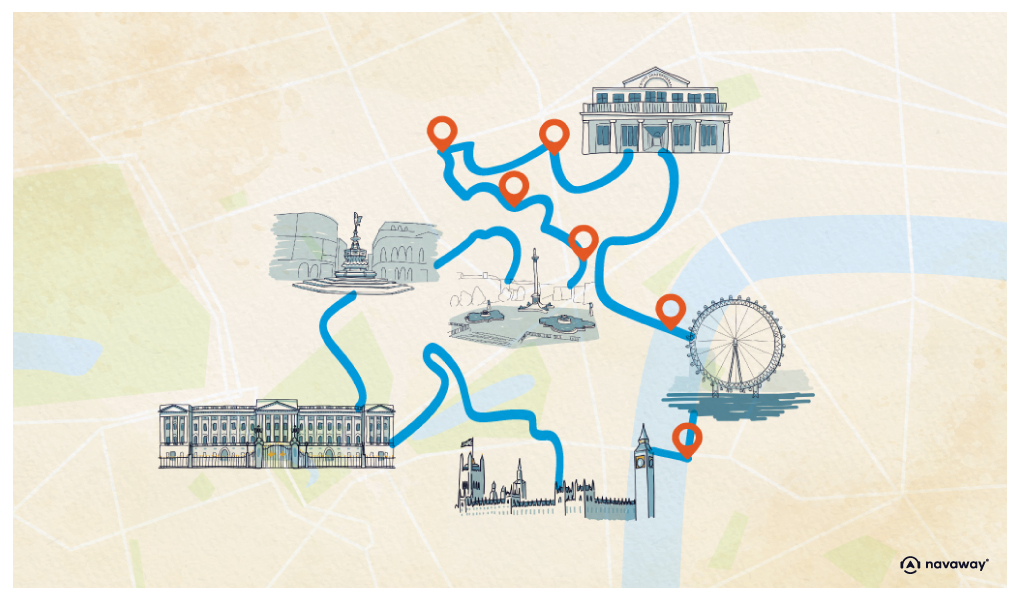
Christmas traditions from around the world: 11 magical customs
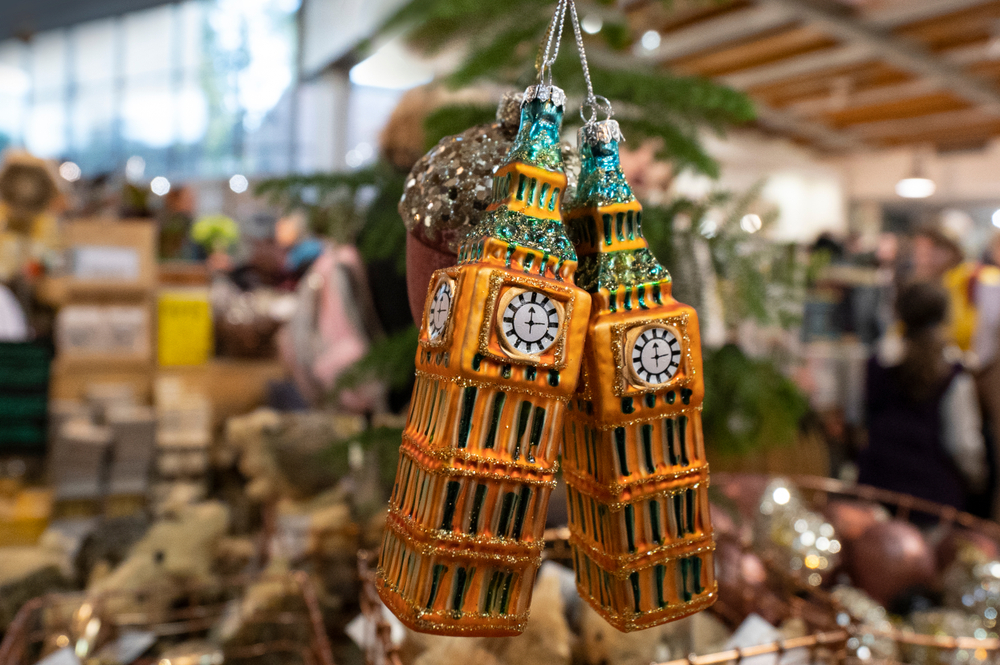
Christmas is a universal holiday, but each country celebrates this magical time in its own way. From rollerblading in Venezuela to British Christmas crackers, Japanese KFC and Iceland’s thirteen trolls, Christmas traditions around the world reveal a fascinating cultural diversity. Set off on a festive journey to the four corners of the globe and discover how different cultures reinvent the magic of Christmas with their unique and sometimes surprising customs.

Also read about Christmas:
- Where to spend Christmas? 11 magical destinations not to be missed
- The 10 most beautiful Christmas markets in Alsace
- Where can you find the best Christmas markets in France this winter?
- Christmas in London: what to see, what to do and where to stay
- How can you spend a New Year’s Eve that’s out of the ordinary?
- Top 5 events in Strasbourg
- The best things to do in winter!
1. United Kingdom: crackers, pudding and Secret Santa
Our British neighbours have turned Christmas into a real celebration of originality. Throughout the month of December, families exchange Christmas crackers, shiny candies in the shape of papillotes that make a little “pop” when you pull them out. Traditionally, they are broken open at mealtimes to reveal the little surprises inside: a colourful paper wreath, a joke to tell and a small gift.
Speaking of meals, the undisputed star of British festivities is Christmas pudding. This dense, rich cake is prepared weeks in advance and contains all sorts of ingredients, sometimes in surprising combinations: dried fruit, spices, brandy and even a silver coin for good luck. Another very popular tradition is the Secret Santa. This famous draw between friends, colleagues or family, where everyone becomes the Secret Santa of a person chosen at random, is taken very seriously in the UK.
Download the audio tour to discover London on foot and on your own
If you want to discover the British capital and its authentic Christmas traditions, let the London Tour be your guide. This 8km audio tour takes you through the city’s iconic districts, from Buckingham Palace to Tower Bridge, via traditional Christmas markets. With 20 points of interest with commentary, you’ll explore the places that make the heart of this royal city beat, particularly magical during the festive season.
2. Venezuela: rollers and baby Jesus
In Caracas, the Venezuelan capital, Christmas morning mass is like any other mass… with one exception: you have to get on rollerblades to get there! Las patinatas are one of the most fun Christmas traditions around the world. From 16 to 24 December, the city’s streets are closed to traffic at dawn to allow residents to skate to the Misa de Aguinaldo, the dawn mass.
This tradition dates back to the 1950s, when families got together after mass and children received their presents, including roller skates. Why not make it two in one? One legend even has it that children tie a string to their toe before going to bed, leaving the other end hanging out the window, so that skaters can pull on it as they pass and wake them up. In Venezuela, the children’s star is not the bearded man dressed all in red, but little Jesus himself, who brings the presents.
3. Greece: children’s songs and the feast of the dead
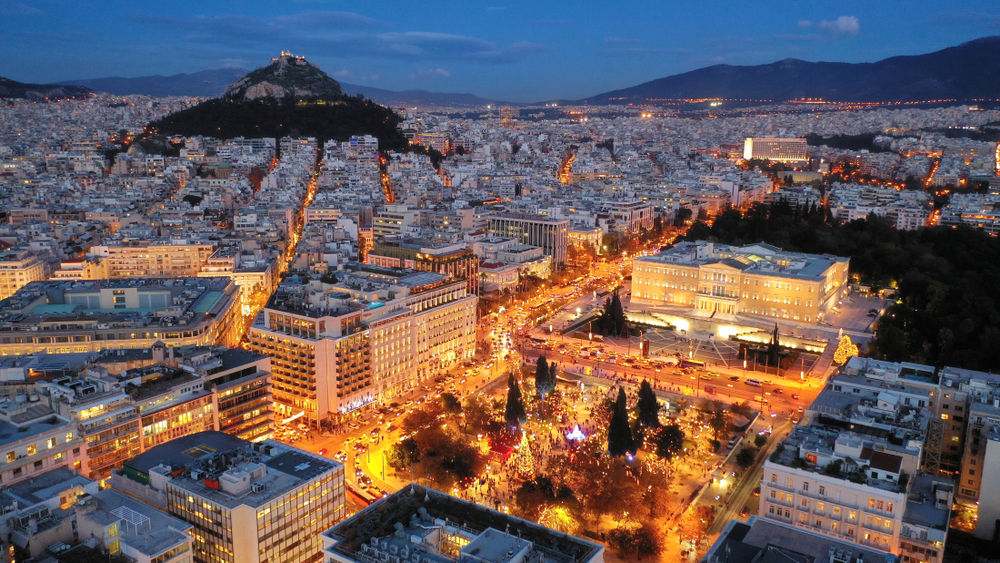
In the early hours of 24 December, Greek children go from house to house singing Calanda, traditional songs that tell the story of the Nativity. In exchange for their melodies, they receive typical Greek sweets: kourabiedes (almond biscuits sprinkled with icing sugar) and melomakarona (honey and walnut biscuits). In the evening, families come together for midnight mass and enjoy Christopsomo, another traditional walnut cake decorated with a cross.
25 December takes on a more solemn aspect, as the dead are honoured. Greeks go to the cemetery to visit the graves of their loved ones. It is not until 1 January, Saint Basil’s Day, that children finally open their presents, brought not by Father Christmas but by Saint Basil, depicted as a learned beggar venerated in Orthodox tradition.
4. Colombia: cities on fire
In Colombia, Christmas is about much more than just lights and decorations. The country celebrates one of the finest Christmas traditions in the world: the Day of the Little Candles (Día de las Velitas). 8 December marks the official start of the festive season, and on this day all the locals place candles and lanterns in front of their homes, on balconies, in gardens and even on pavements.
This tradition honours the Virgin Mary and the Immaculate Conception, but it also gives Colombian cities an incomparable fairytale charm. Over the years, the custom has grown: Colombians now light thousands of candles in parks, on porches and along streets. As you stroll along these glowing streets, traditional music accompanies your steps, making this stroll through what looks like a bed of earthly stars even more intoxicating.
5. Italy: a star witch

Italy, a very religious country, does not skimp on the tradition of the Christmas tree and the Christian cot. Naples is considered to be the cradle of this tradition, where you can admire some of the most beautiful nativity scenes in the world. However, in the south of the country, there is no Father Christmas or baby Jesus to bring presents to children. That task falls to a very special character: the Befana.
On 6 January, the day of the Epiphany, this old witch travels from chimney to chimney on her flying broom, handing out presents to good children and coal to the more boisterous. Dressed in rags and covered in soot, the Befana has become an emblematic figure in Italian tradition. According to legend, she refused to accompany the Three Wise Men to Bethlehem, and now roams the rooftops in search of the infant Jesus, leaving gifts for the children she meets. If the delights of Italian cuisine need no introduction, their traditional Christmas dessert, Panettone, is also an integral part of the festivities.
To discover the magical atmosphere of Christmas in Italy, don’t hesitate to visit Rome during the festive season, where traditions mingle with the thousand-year-old history of the Eternal City.
6. Mexico: radishes and piñatas
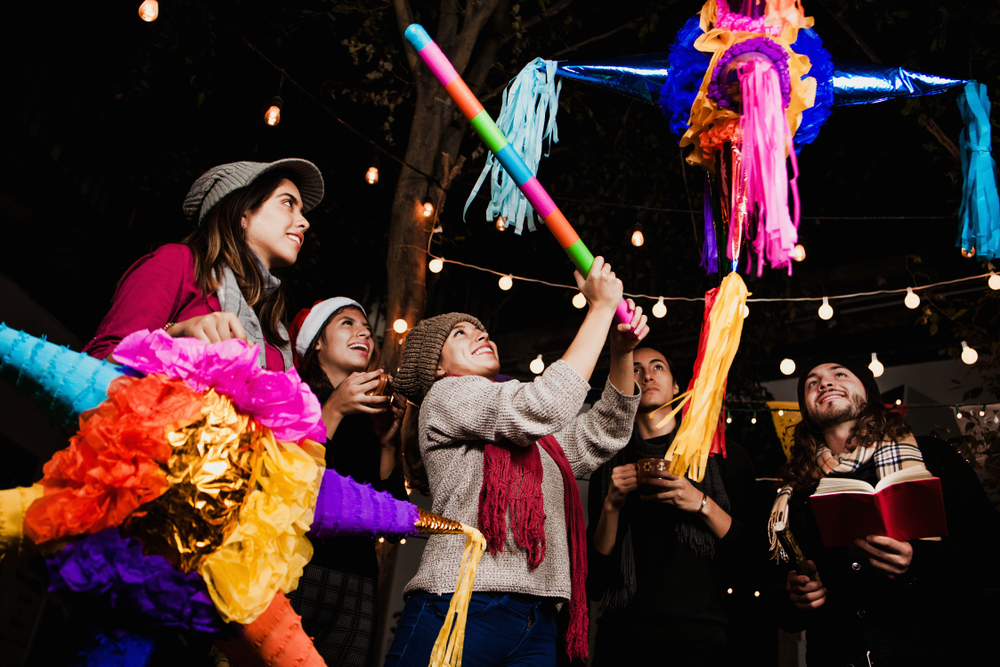
Here are two of the most original Christmas traditions from around the world! In Mexico, Christmas celebrations begin on 16 December with the Posadas, a re-enactment of Mary and Joseph’s search for shelter. The locals wander from home to home, looking for a place to “give birth” to their Jesus. Sometimes they are invited into homes to break open a piñata filled with nuts, oranges and sugar canes.
But the most surprising tradition is the radish sculpture competition (Noche de Rábanos) held on 23 December in Oaxaca. Artisans transform these vegetables into ephemeral works of art depicting scenes from the Nativity, historical monuments or traditional characters. These sculptures are used to decorate homes. For Mexican children, however, it’s not until 6 January and the arrival of the Three Wise Men that they can open their presents and enjoy the traditional Rosca de Reyes, a brioche in the shape of a crown.
7. Germany: two friends at opposite ends of the spectrum
Throughout December, Advent wreaths light up German homes, with their four candles lit progressively every Sunday. On 6 December, as in many of the countries on our list of Christmas traditions around the world, well-behaved children receive their presents from Saint Nicholas (Sankt Nikolaus), who travels from house to house on his donkey.
Just like Father Christmas, he meets children and hands out sweets. But beware of unruly children! St Nicholas is accompanied by his less than reassuring sidekick: Knecht Ruprecht or Father Fouettard (Krampus in some regions). This character, a monk dressed in dark robes with a demonic face and carrying a stick, is responsible for reprimanding bad behaviour. This duality between benevolence and threat is an integral part of Germanic folklore and is designed to encourage good behaviour in children.
Germany’s famous Christmas markets (Weihnachtsmärkte) are also a must-see, especially Munich’s, which attracts millions of visitors every year with its stalls of mulled wine, gingerbread and traditional crafts.
8. Russia: grandfather Gel and grandmother Babushka
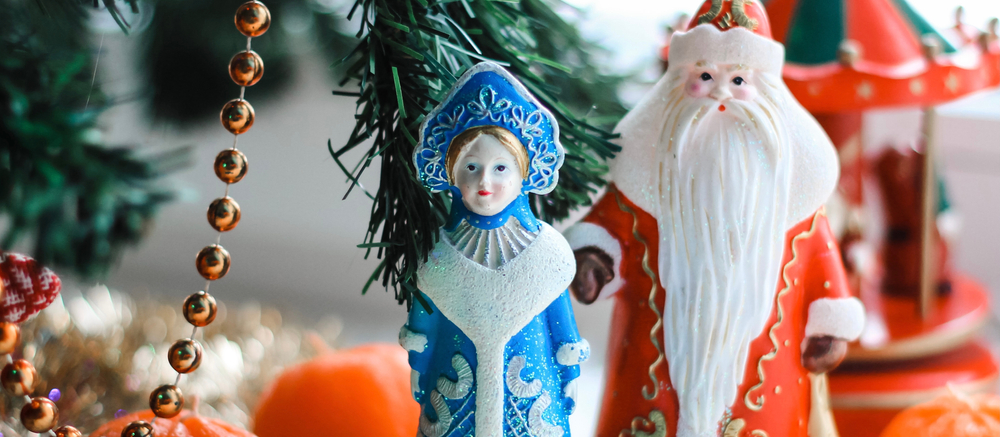
In Russia, Christmas is celebrated on 6 January according to the Orthodox calendar (Julian calendar). However, Russian children receive their presents on New Year’s Eve, 31 December, extending the festivities over a longer period. The characters who bring the presents are none other than Ded Moroz (Grandpa Gel or Father Gel) and Babushka (Grandma).
Ded Moroz, cousin of the flying reindeer sleigh driver, is dressed in a long blue or silver coat and carries a magic stick. He is accompanied by his granddaughter Snegurochka (the snow girl), who helps him distribute gifts. As for Babushka, according to legend, she refused to follow the Three Wise Men and has been looking for the Christ Child ever since, leaving gifts for the children she meets. New Year’s Eve is traditionally spent with the family over a hearty meal, while 6 January is devoted to religious celebrations.
9. Wales: the mysterious Mari Lwyd
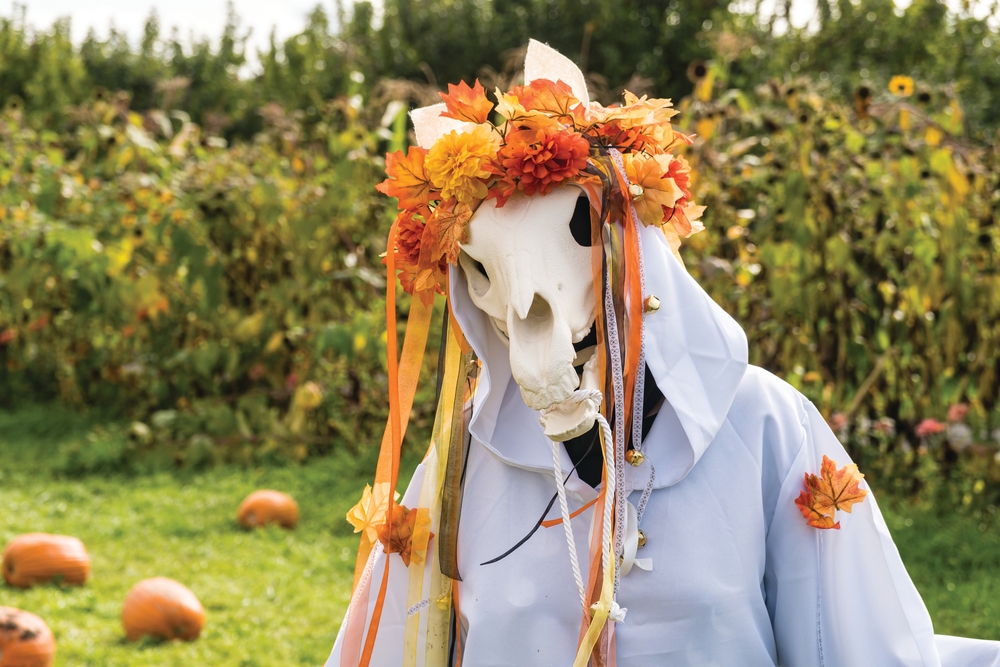
Wales has one of the most fascinating and mysterious Christmas traditions in Europe: Mari Lwyd, which means “grey mare”. Between Christmas and Twelfth Night (Epiphany), a group of singers travels through the Welsh villages carrying a horse skull mounted on a long stick. The skull is decorated with colourful ribbons, bells, rosettes and fake bottle glass eyes. The lower jaw is hinged, allowing the person hidden under the white sheet to rattle it in a disturbing manner.
This spectral creature stops outside the doors of houses and pubs, and a veritable poetic duel (pwnco) ensues between the group accompanying the Mari Lwyd and the occupants of the dwelling. The two sides exchange rhyming verses, often humorous or slightly mocking, until one side runs out of inspiration. If the Mari Lwyd’s bearers win, they are invited in and the ghost-horse whinnies around the house, snapping its jaws and chasing the guests, particularly the young women, in an atmosphere of merry mayhem.
A pre-Christian tradition probably dating back to Celtic times, Mari Lwyd is believed to bring good luck in the New Year. Once inside, visitors are rewarded with food and drink, including wassail, a traditional hot spiced drink. This custom, which almost disappeared at the beginning of the 20th century, is now enjoying a revival in several parts of South Wales, perpetuating one of the strangest and most bewitching winter rituals in Europe.
10. Iceland: a visit from the mischievous trolls
Christmas in Iceland means a visit from the Yule Lads (Jólasveinar), thirteen merry trolls full of mischief. This merry band takes to the streets thirteen days before and thirteen days after Christmas. Every night, from 12 to 24 December, a new Yule Lad descends from his mountain to visit children who have left their shoes outside their door or on the windowsill.
The mischievous little trolls then drop off a present for good children, or a rotten potato for bad ones. Each of the thirteen companions has a descriptive name and a well-defined role once they arrive in the houses: Stekkjarstaur (the sheep scarecrow), Giljagaur (the ravine prowler), Stúfur (the short man), Þvörusleikir (the spoon licker), Pottaskefill (the pot scraper), Askasleikir (the bowl licker), Hurðaskellir, Skyrgámur, Bjúgnakrækir, Gluggagægir, Gáttaþefur, Ketkrókur and Kertasníkir. It’s guaranteed to be one heck of a racket and one heck of a lot of fun!
According to legend, they are the sons of the terrible Grýla, an ogress who eats disobedient children, and Leppalúði. The family is completed by the Christmas Cat (Jólakötturinn), a giant feline who devours those who don’t get new clothes for Christmas.
11. Japan: a bucket at KFC
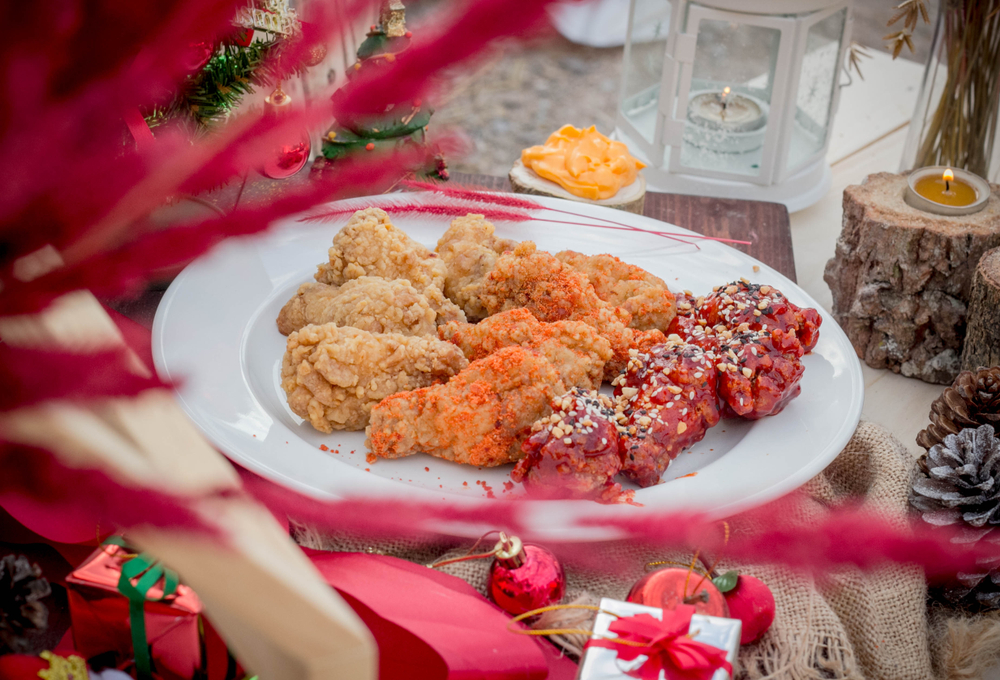
Here’s the number one most disconcerting Christmas tradition in the world! You’re in Japan at Christmas and you see loads of families turning up at KFC for dinner? Perfectly normal! Eating Kentucky Fried Chicken has become the most popular Christmas tradition in the Land of the Rising Sun, so much so that the Kentucky Fried Chicken chain takes orders months in advance and welcomes endless queues on Christmas Day.
This surprising tradition dates back to the 1970s, when KFC launched a brilliant marketing campaign with the slogan “Kurisumasu ni wa kentakkii! The story goes that a KFC manager in Tokyo, Takeshi Okawara, came up with the idea after hearing Western expatriates complain that they couldn’t find a turkey for Christmas. He suggested fried chicken as an alternative and dressed a Colonel Sanders as Father Christmas. It was an instant success, and the tradition has endured for over fifty years.
Today, Christmas sales account for around a third of KFC’s annual turnover in Japan. For dessert, Japanese tradition calls for a Christmas cake, a sponge cake covered in whipped cream and strawberries, in the colours of the Japanese flag. This American-style cake has become a staple of celebrations, recalling the post-war era when Americans helped the Japanese rebuild their country and brought along their traditional pastries.
In conclusion, these eleven Christmas traditions from around the world remind us that the magic of the festive season comes in a thousand colours and flavours. From Japanese fried chicken and Icelandic trolls to Venezuelan rollerblades and Italian Befana, each country reinvents Christmas in its own way, creating unique rituals that bring families together and perpetuate local cultures. These customs, sometimes surprising to outsiders, reflect the history, beliefs and creativity of each people. Whether you prefer British Christmas crackers or giant Philippine lanterns, the spirit of Christmas is universal: sharing moments of joy, generosity and conviviality with those you love. If you’d like to experience these traditions in situ, take a Navaway audio tour to explore these destinations during the festive season and immerse yourself in their authentic festive customs.
FAQ : Christmas traditions from around the world
Which country celebrates Christmas by eating KFC?
Japan has been celebrating Christmas with KFC fried chicken since the 1970s. This tradition, born of a marketing campaign, has become so popular that Japanese families order their meals months in advance and queue for hours on 25 December.
Who is Befana in Italy?
La Befana is a benevolent witch from Italian folklore who brings presents to children on 6 January, the day of the Epiphany. She flies from chimney to chimney on her broom, leaving presents for the good children and coal for the bad ones.
Why do Venezuelans go to Mass on rollerblades?
In Caracas, Venezuela, the tradition of skating dates back to the 1950s. The streets are closed to traffic to allow the locals to skate to the dawn mass (Misa de Aguinaldo) from 16 to 24 December, creating a unique festive atmosphere.
How many Yule Lads are there in Iceland?
Iceland has thirteen Yule Lads (Jólasveinar), mischievous trolls who descend from the mountains one by one between 12 and 24 December. Each one has its own name and its own speciality: stealing saucepans, licking spoons, slamming doors and so on.
What is a British Christmas cracker?
A Christmas cracker is a typically British surprise wrapper that makes a firecracker noise when you pull it. It traditionally contains a paper wreath, a joke and a small gift. Crackers are a staple of Christmas tables in the UK.
What’s so special about Colombian Christmas?
Colombia celebrates the Día de las Velitas (Day of the Little Candles) on 8 December, marking the start of the festivities. Thousands of candles and lanterns light up the streets, houses and parks, creating a magical atmosphere in honour of the Virgin Mary.
200 audioguided tours for cities all around the world
Download